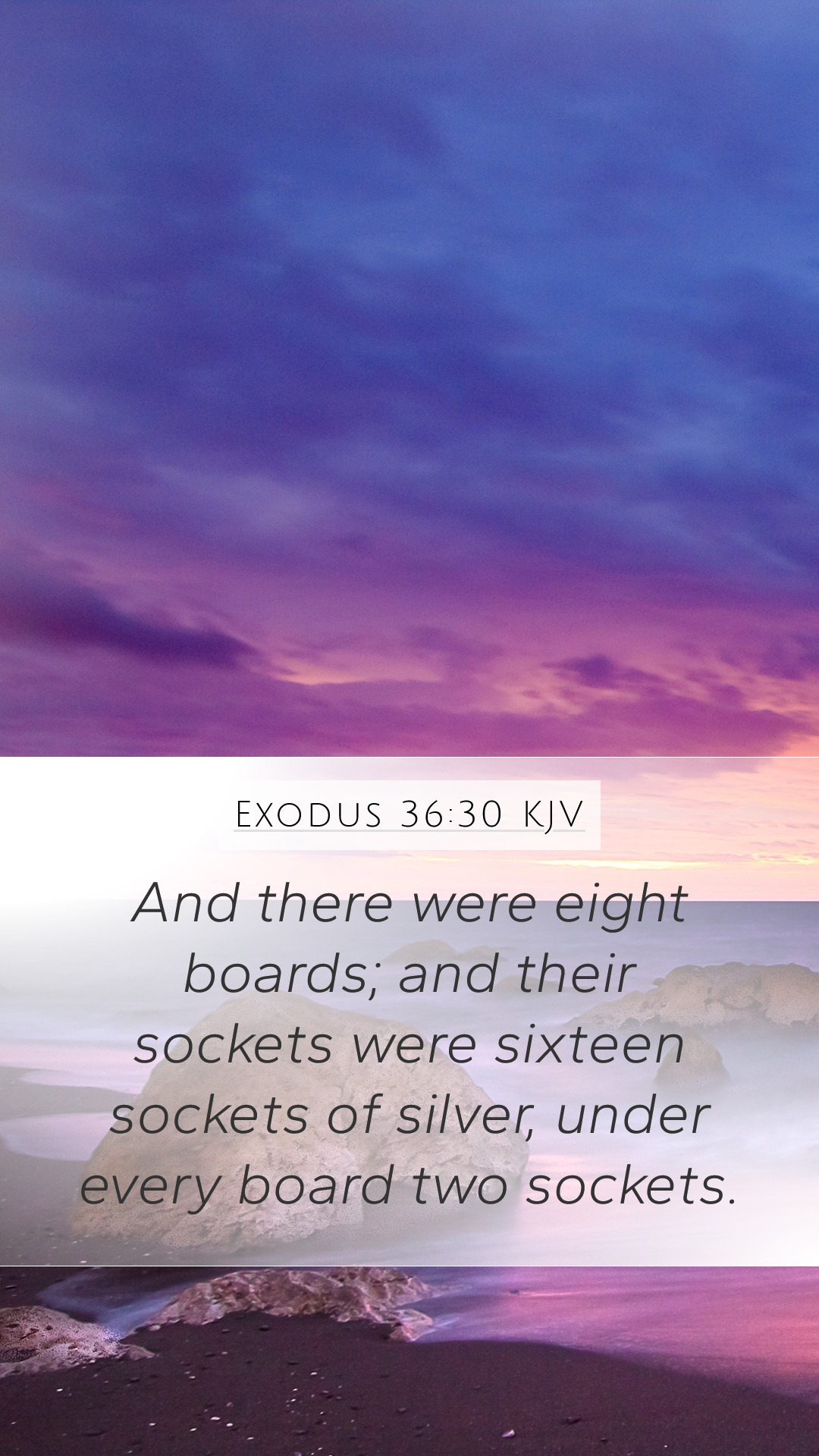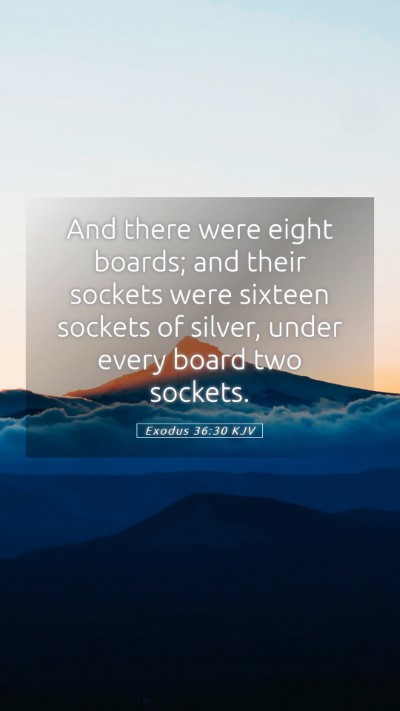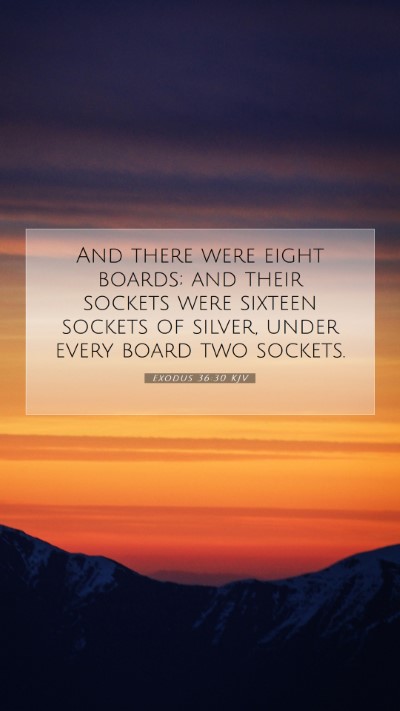Understanding Exodus 36:30
Exodus 36:30 reads: "And he made the vail of blue, and purple, and scarlet, and fine twined linen: with cherubims made he it of the cunning workmen." This verse describes part of the construction of the Tabernacle, specifically the veil that separated the Holy of Holies from the rest of the sanctuary. The crafting of this veil is rich in symbolism and significance, which has been expounded upon by various Biblical commentators such as Matthew Henry, Albert Barnes, and Adam Clarke.
Bible Verse Interpretations
Understanding this verse involves recognizing both its historical and theological implications. The veil itself serves as a physical representation of the barrier between mankind and God, one that prevents direct access to the Divine Presence.
Symbolism of the Veil
- Color Significance: The colors mentioned (blue, purple, and scarlet) are not arbitrary. In biblical interpretations, blue often symbolizes heaven, purple represents royalty, and scarlet can signify sacrifice or blood. This palette suggests the principles of divine authority and sacrifice inherent in the worship practices of the Israelites.
- Cherubims: The inclusion of cherubim as part of the veil's design is deeply symbolic. Cherubim are often depicted as guardians of sacred spaces, emphasizing God's holiness and the need for reverence in approaching Him. This again underscores the barrier that sin creates between God and humanity.
- Cunning Workmanship: The phrase " cunning workmen" indicates the skill and precision with which the veil was made. This highlights the importance of artistry and dedication in the service of God. It suggests that the worship of God should be approached with diligence and care.
Bible Verse Commentary
Matthew Henry's commentary elaborates on the dual aspect of the veil: it signifies both separation and protection. While it marks the place where God’s presence dwells—thus indicating a divide due to human sin—it also serves to protect the holiness of God from His people who are not yet purified.
Albert Barnes adds depth to the understanding by discussing the elaborate nature of the veil's design, which reflects the beauty and complexity of worshipping a God who is both immanent and transcendent.
Adam Clarke notes that in the larger context of Exodus, this veil forms part of the divine instruction regarding the worship of God, emphasizing that true worship involves approaching God according to His divine regulations.
Application of the Verse
For modern believers, Exodus 36:30 is instructive in several ways:
- Understanding Our Access to God: With Christ's sacrifice, the veil that separated humanity from God has been torn, granting believers direct access to the Father (Matthew 27:51). This serves as a reminder of the grace and the new covenant established through Jesus.
- Significance in Worship: The verse encourages believers to approach worship with reverence and care, recognizing the holiness of God and the importance of dedicating one’s craft and efforts in serving Him.
Historical Context
When interpreting this verse, it is crucial to consider the historical context of the Israelites during their desert journey post-exodus. The Tabernacle served as the central place of worship and the dwelling of God among His people. The instructions for its construction, including the veil, were vital for establishing a proper order of worship and recognizing God's holiness.
Cross References
- Hebrews 10:19-20: Discusses how through the blood of Jesus, believers have confidence to enter the Most Holy Place, correlating with the symbolism of the veil.
- Exodus 26:31-33: Provides more detail about the construction and significance of the veil.
- Matthew 27:51: Relates to the tearing of the veil at Jesus' death, symbolizing the end of the separation between God and humanity.
Conclusion
In conclusion, Exodus 36:30 is a verse laden with meaning that reflects the principles of worship, the nature of God, and the significance of the veil in the context of the Israelite's relationship with the Lord. By interpreting and understanding this verse, modern believers can see the connections between the Old Testament practices and their implications in the life of faith today.


